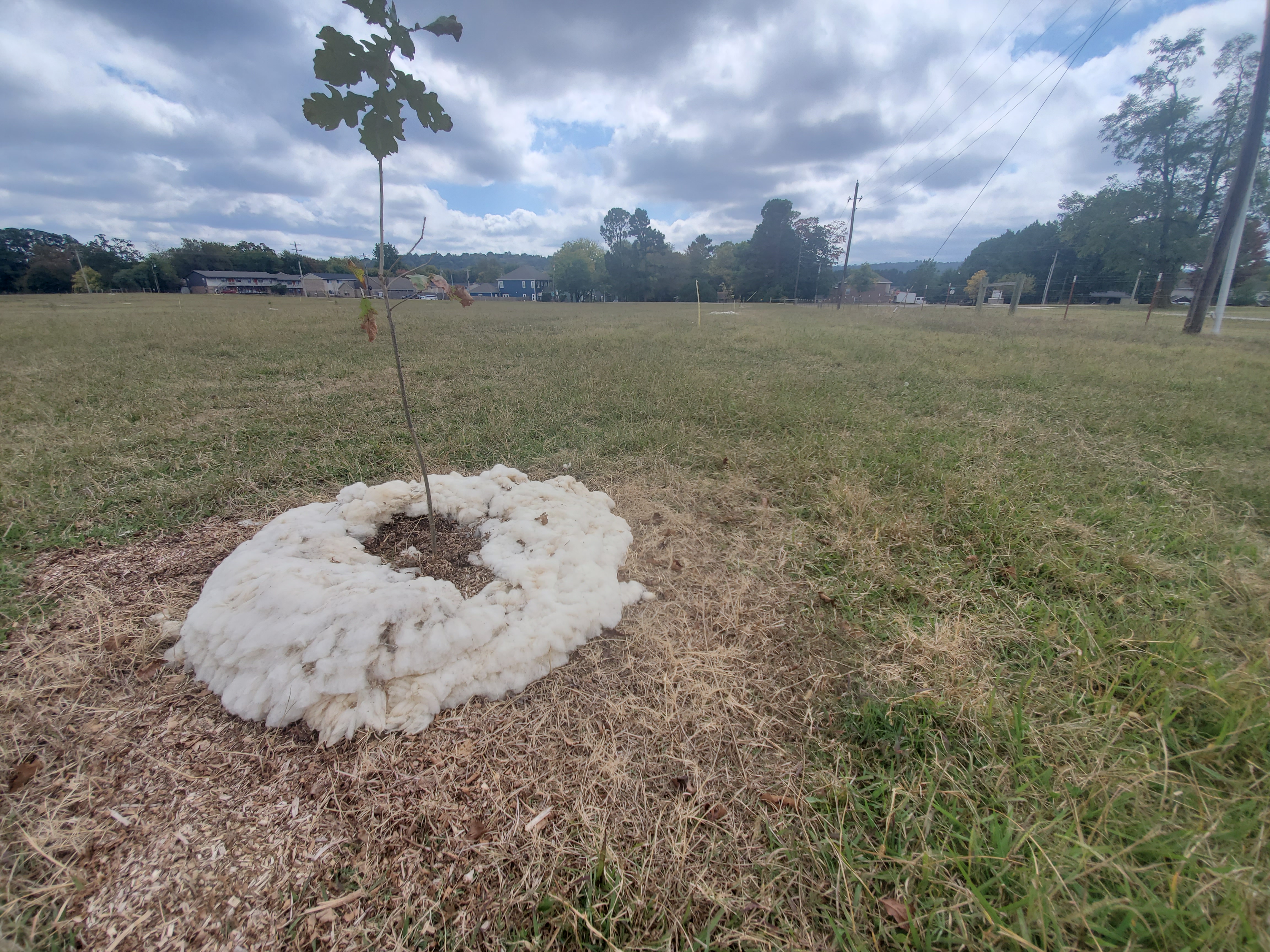Oct. 30, 2020
Division of Agriculture to study mutual benefits of sheep, shade trees
By the U of A System Division of Agriculture
Fast Facts:
- Division of Agriculture to study benefits to pastures, sheep from shade trees
- Several species used; selected with input from University of Missouri
(479 words)
(Newsrooms: With art at https://flic.kr/p/2k1wSov and https://flic.kr/p/2k1wSst)
(Download this story in MS Word format here.)
FAYETTEVILLE, Ark. — If there was ever an animal who might appreciate a good shade tree, surely it is the sheep. Soon, the researchers will begin conducting research on the effect of shade trees on sheep pastures, investigating how the trees might benefit both the animals and the pastures themselves.
As part of a strategy to make livestock operations overall more resilient, as well as “future-proof” the University of Arkansas System Division of Agriculture’s Fayetteville Research Station, several researchers with the Department of Animal Science are establishing shade trees on the station’s 25-acre grazing pasture north of the University of Arkansas Fayetteville campus.
Dirk Philipp, associate professor of animal science for the Division of Agriculture, said his department maintains a herd of about 30 sheep for research and public education purposes.
This fall, he and his fellow researchers will be establishing about 20 paddocks, each of which are between one-half acre and an acre. The department received funding for the project through an existing cooperative agreement with USDA-ARS National Laboratory for Agriculture and the Environment in Ames, Iowa.
Philipp and his team selected five tree species for the experiment with the cooperation of the University of Missouri, including swamp white oak, sycamore, red mulberry, red maple and bald cypress.
Philipp said the decision to plant the trees was, in part, to study the effect of shade on the grasses — and the sheep that graze them — while circumventing the need to build expensive structures.
“With the establishment of the sheep research paddocks, we needed some kind of shade,” Philipp said. “Half of the trees have been planted already while the remaining one will be planted during the coming weeks.”
In each paddock, two trees will be planted on either end at defined distances from each other and the fence to maintain open grazing.
“With likely hotter and drier summers in the future, providing animals with permanent shade is paramount for their health and well-being,” Philipp said. “Long term, we expect a host of other positive side effects and opportunities.”
Those opportunities include possible research on nutrient cycling between pastures and woody species, the study of grazing and resting behavior driven by shade and teaching and extension opportunities on selection of shade tree species and their care, Philipp said.
Trees were also randomized for each paddock to ensure that sheep production data can be obtained statistically without interference from tree size and canopy effects, he said.
Wool for trees
Philipp said another, somewhat surprising aspect of the research is looking at the benefit of the sheep on the trees themselves, to include the application of wool as additional mulch around the trees.
“The heavy wool acts as an insulator, keeps moisture in, and may even serve as a slowly decomposing nutrient and mineral source,” Philipp said. “This is a good sustainable use of byproducts if there’s no immediate market for the wool.”
To learn more about extension programs in Arkansas, contact your local Cooperative Extension Service agent or visit www.uaex.uada.edu. Follow us on Twitter at @UAEX_edu.
About the Division of Agriculture
The University of Arkansas System Division of Agriculture’s mission is to strengthen agriculture, communities, and families by connecting trusted research to the adoption of best practices. Through the Agricultural Experiment Station and the Cooperative Extension Service, the Division of Agriculture conducts research and extension work within the nation’s historic land grant education system.
The Division of Agriculture is one of 20 entities within the University of Arkansas System. It has offices in all 75 counties in Arkansas and faculty on five system campuses.
Pursuant to 7 CFR § 15.3, the University of Arkansas System Division of Agriculture offers all its Extension and Research programs and services (including employment) without regard to race, color, sex, national origin, religion, age, disability, marital or veteran status, genetic information, sexual preference, pregnancy or any other legally protected status, and is an equal opportunity institution.
# # #
Media contact:
Ryan McGeeney
Communications Services
University of Arkansas System Division of Agriculture
Cooperative Extension Service
(501) 671-2120
rmcgeeney@uada.edu
